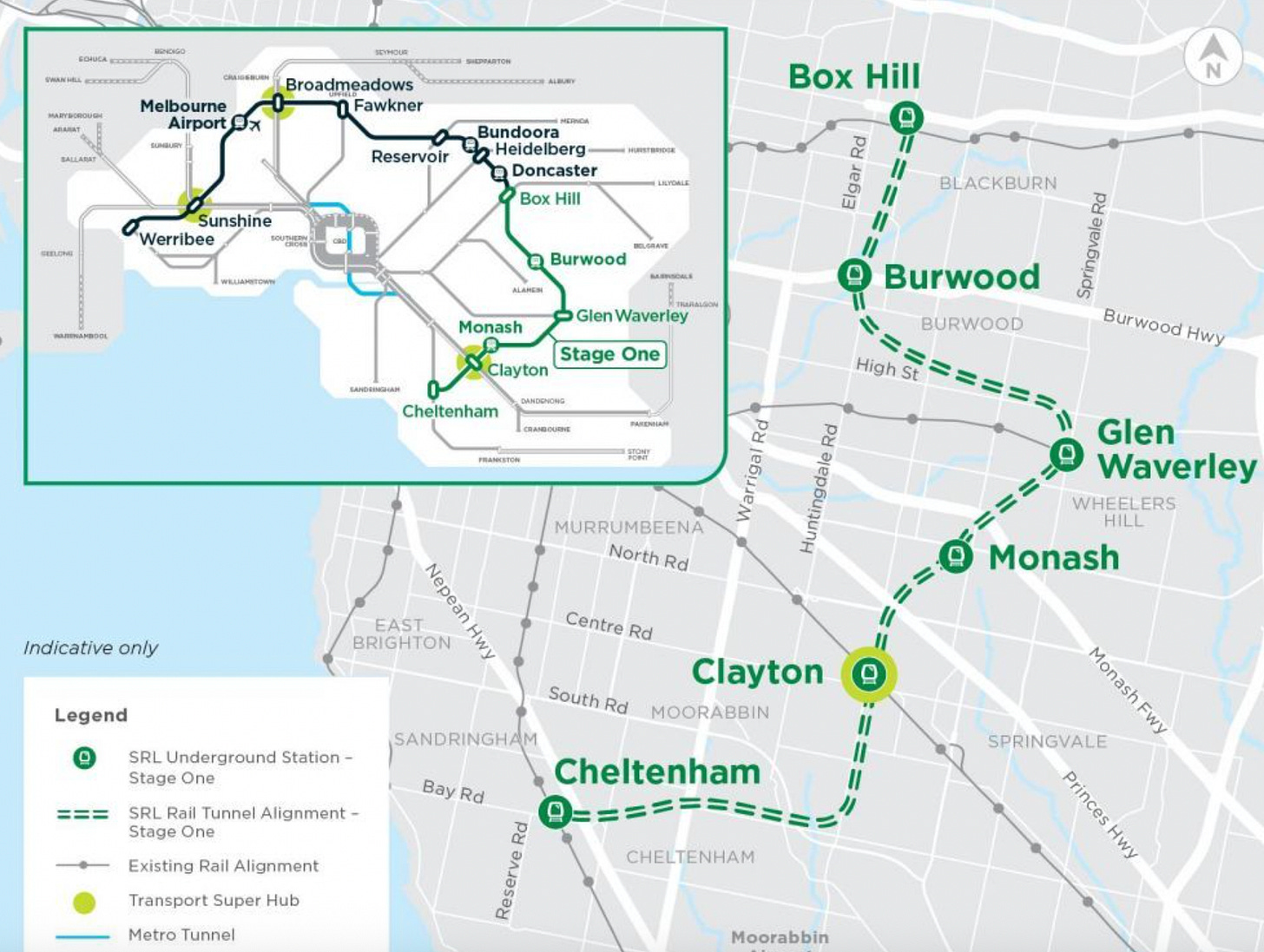Counting the Cost
The Victorian government needs to deliver major projects for cheaper, as the scale of what needs to be built is immense
This is part three in my series of op-eds written for the Melbourne broadsheet The Age, which the paper rejects. You can read part 1 Train in Vain and part 2 Character Development.
The series is build around two premises. 1) The Age is deeply fretful about the city’s growth and is hostile to major projects that would facilitate this growth1, and 2) the paper’s opinion page is shit. Devoid of big ideas and full of terrible writing.
I have decided to keep sending them articles that I know go against their editorial line in a futile attempt to have them to take their role seriously. Every serious city needs a serious newspaper where big ideas about the city are discussed.
Given the paper’s obsession with the cost of the SRL, I thought that this piece might have a shot of being published. But their fretfulness can only understand “cancel the project”, not “bring down the costs”.
Here is the piece:
This week Montreal opened the second section of the Réseau express métropolitain, or REM. A rapid transit system that connects the southern suburbs, through the heart of the city to the north. Two branches off the main line – one to the west of the city and another to the airport – will open in 2026 and 2027 respectively. Once fully complete there will be 67 kms of new track and 19 new stations. The total cost of the project is around 10 billion Australian dollars.
I am writing this article from Sweden, where in Stockholm there is a major expansion to the Tunnelbana currently under construction. A whole new line is being added, plus extensions to two other lines. A total of 30 kms of new track and 18 new stations. The cost is just under 9 billion Australian dollars.
In Melbourne, the first stage of the Suburban Rail Loop’s (SRL) will consist of 26 kms of new track and six new stations. The cost shall be at least 30 billion. Triple the cost of these other projects, for considerably less construction.
Canada and Sweden are not low-wage countries. They are not countries that skimp on safety or quality. They are not countries without dense bureaucratic webs and a range of different stakeholders to be placated. Yet they have found a way to navigate this more efficiently and effectively. With a lazer-like focus on outcomes.
Yet it seems no-one in the Victorian government has thought to pick up the phone and ask them how they’ve done it. The SRL CEO, sitting up in Brisbane in his shorts and thongs, hasn’t thought that maybe global best practice is something he should consider?
Aside from the appropriate use of taxpayers’ money, the reason this is a problem is not because the SRL is a bad project. It is because the scale of rail infrastructure Melbourne needs to build is so immense that it is essential projects are delivered in a more cost-effective way.
Melbourne is a good 50 years behind where it needs to be with its rail network. The premier likes to mention that we’ll be the population of London by 2050, but even with the SRL and the new Metro Tunnel we are nowhere near having anything as extensive as the Tube. Even with our current population we are being embarrassed by cities half our size like Stockholm and Copenhagen, with their dense metro systems.
The Andrews/Allan governments have understood the necessity to build. Its first two projects, the Metro Tunnel and the Level Crossing Removal Project have been about problem solving. Allowing more trains to move more often. The SRL is about offering new avenues and reshaping the way we move around the city. But it is not enough.
The cost of the SRL has meant that Metro 2 has been kicked down the road. Metro 2 is essential for the Fishermans Bend precinct to reach its full potential. Without it, the area is a useless plot of land. As the University of Melbourne has recently recognised. The government’s lack of urgency on this project is short-sighted and neglectful. Were we as thrifty as the Canadians or Swedes we could afford both it and the SRL.
Over the past few elections the Victorian public have made a pragmatic calculation. Faced with the choice between a party that builds expensively and inefficiently, and a party that is hostile to building anything at all, they have sensibly chosen the former.
But politics doesn’t have to be this way. It doesn’t have to be a game of simply being for or against something. It can be a contest between doing things and doing things better. The New South Wales Liberal Party has understood this. With that state now having the luxury of two major parties trying to outcompete each other on rail projects.
This week’s change in leadership of the Liberal Party in Victoria offers an opportunity to follow suit. To position themselves as a party that will build, and build with greater efficiency. To be a party that wants to be responsible towards – and think big about – Melbourne’s future. With a promise to implement global best practice in doing so.
We have entered into a new era of urban construction. With major cities around the world understanding that public transit networks are the essential veins that allow their cities to thrive. Melbourne’s decades of rail network neglect has left us playing catch up. Unless we can bring down construction costs, we will continue to miss the train.
The irony of this is that their opposition to these projects makes their fears worse.



It's an interesting article but it's a bit problematic to suggest the REM (very little new tunnelling, mostly conversion of existing track) is a comparable project to the 100% tunnelled SRL